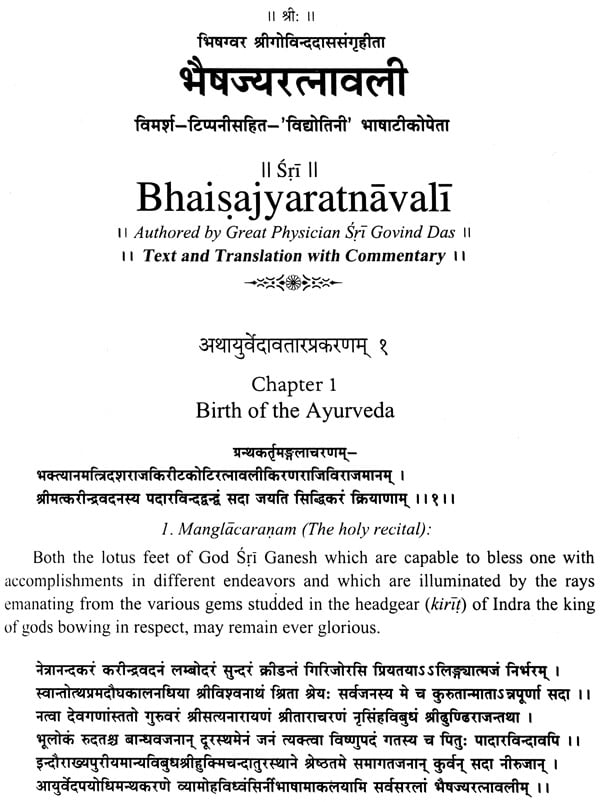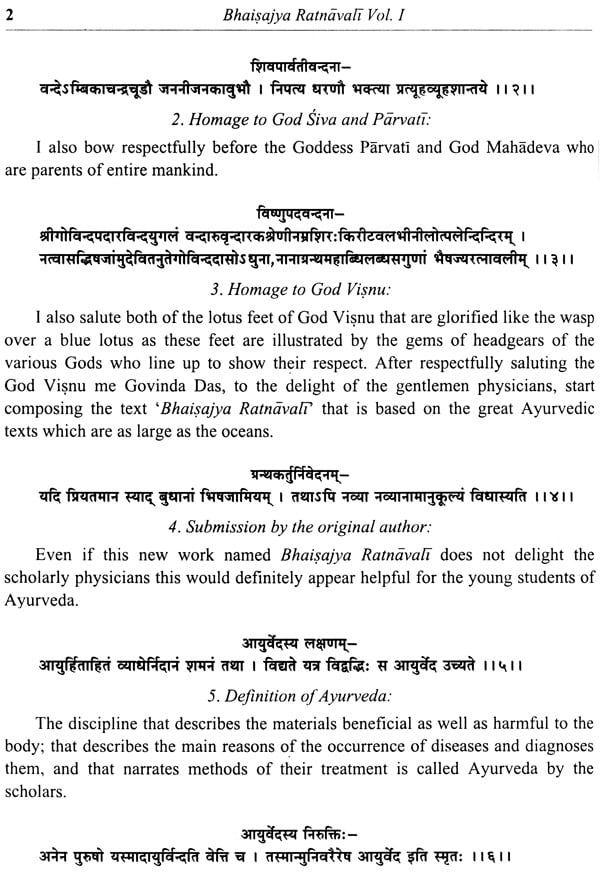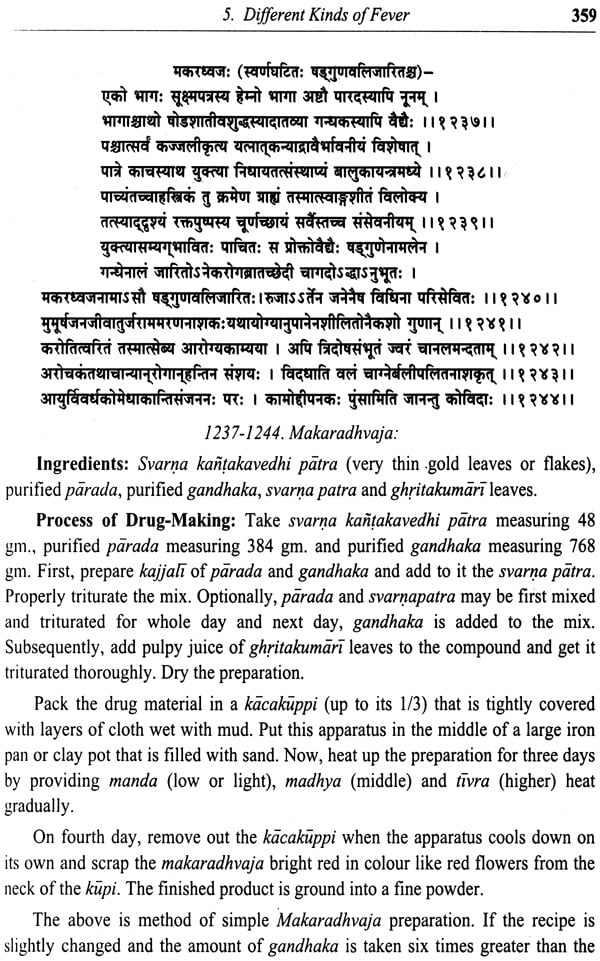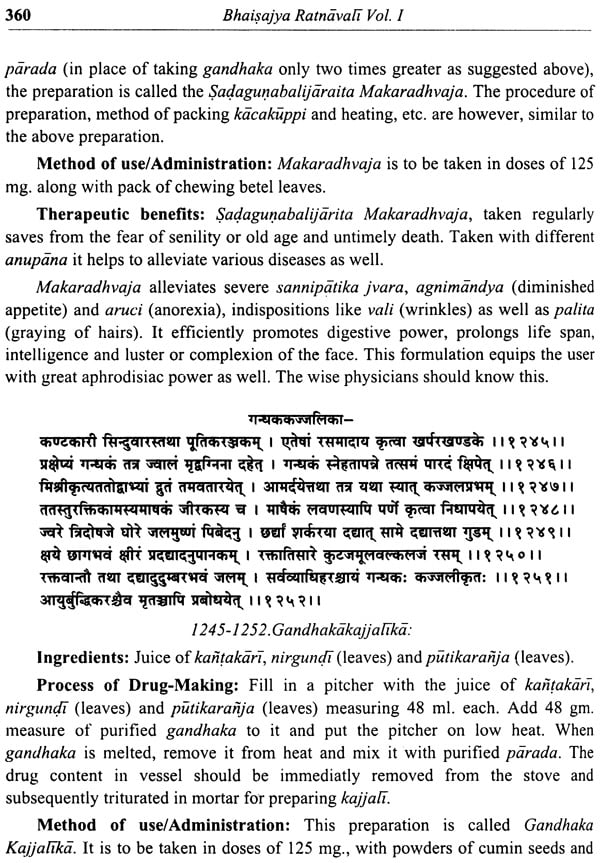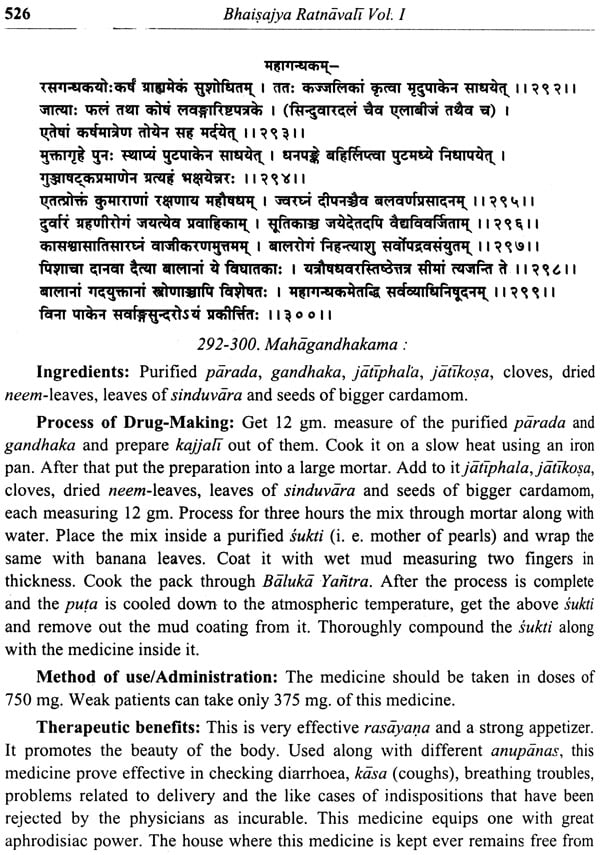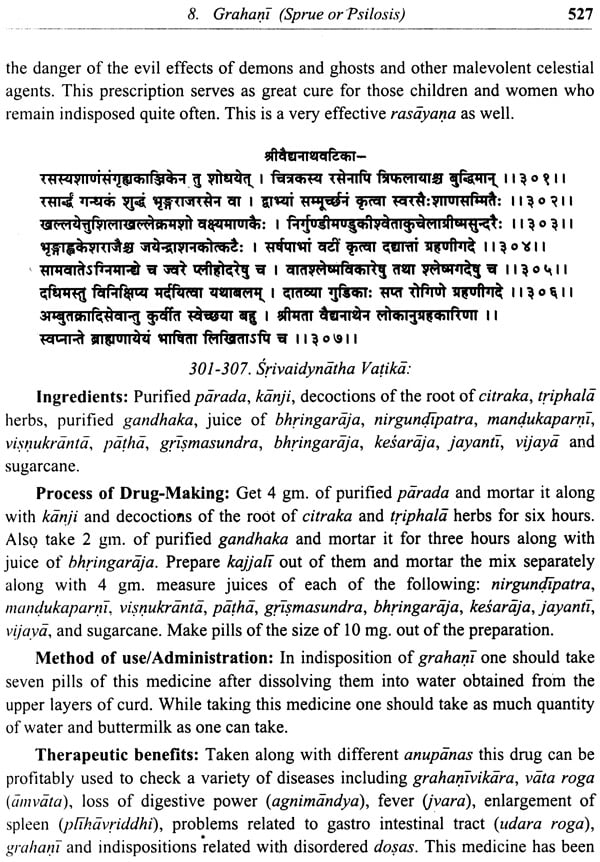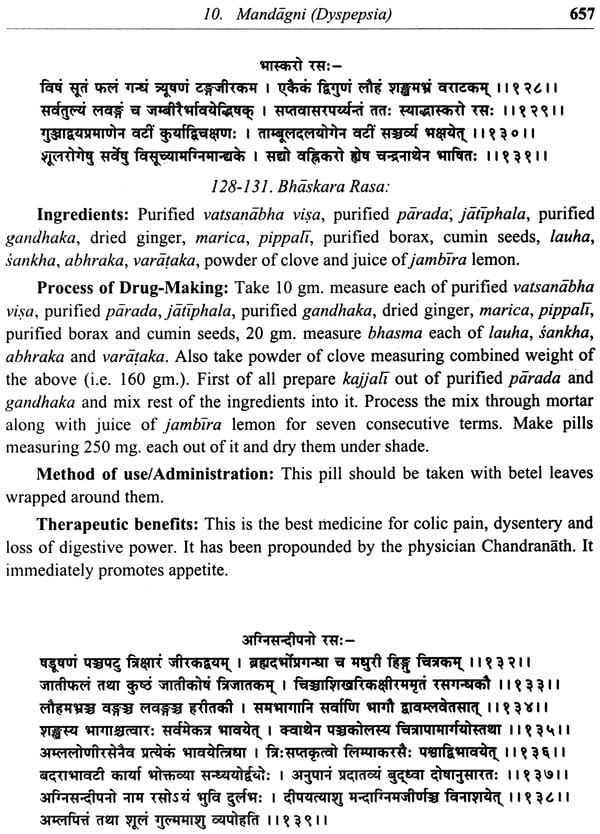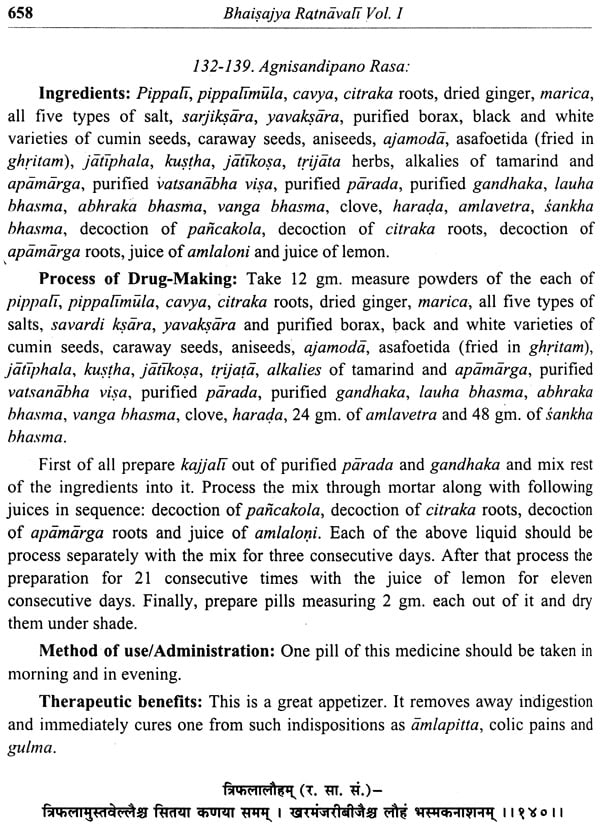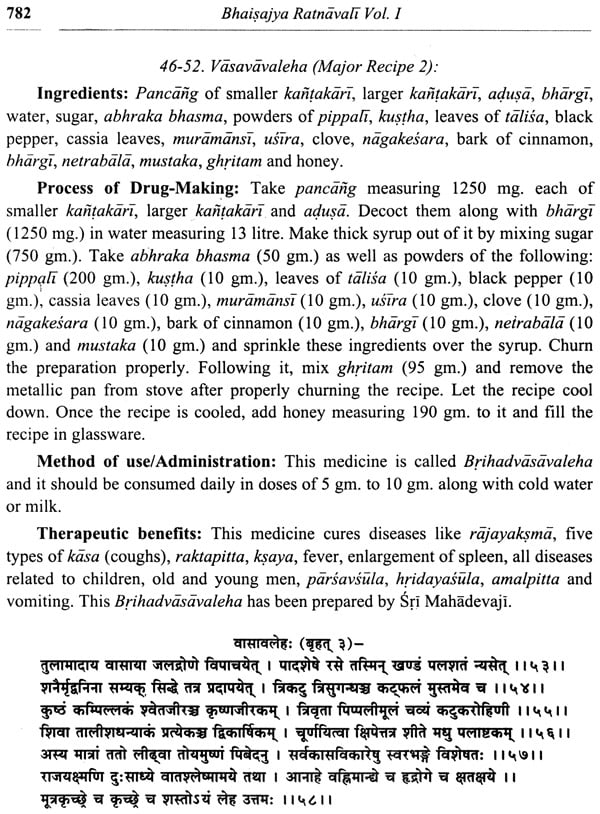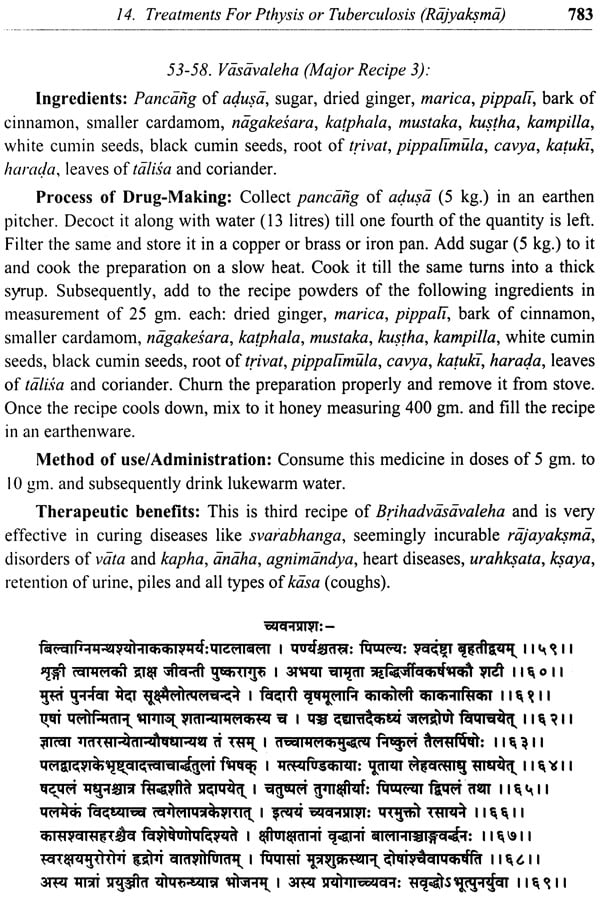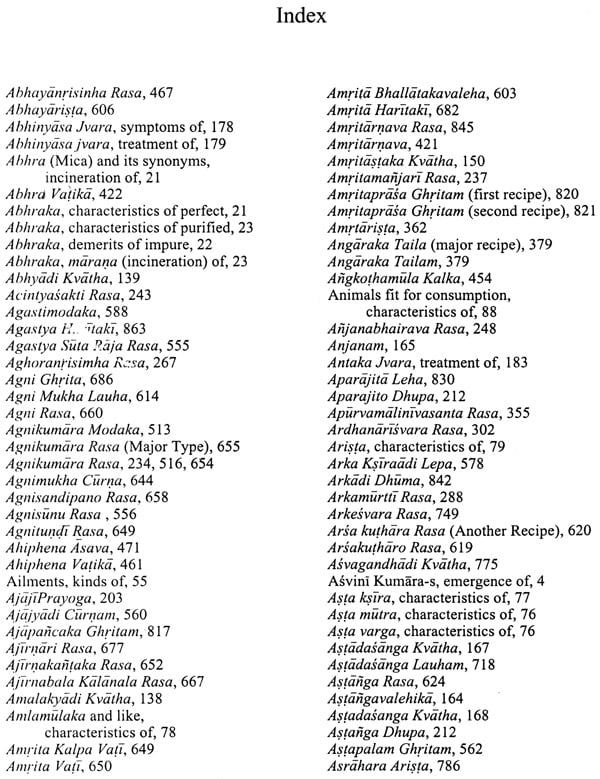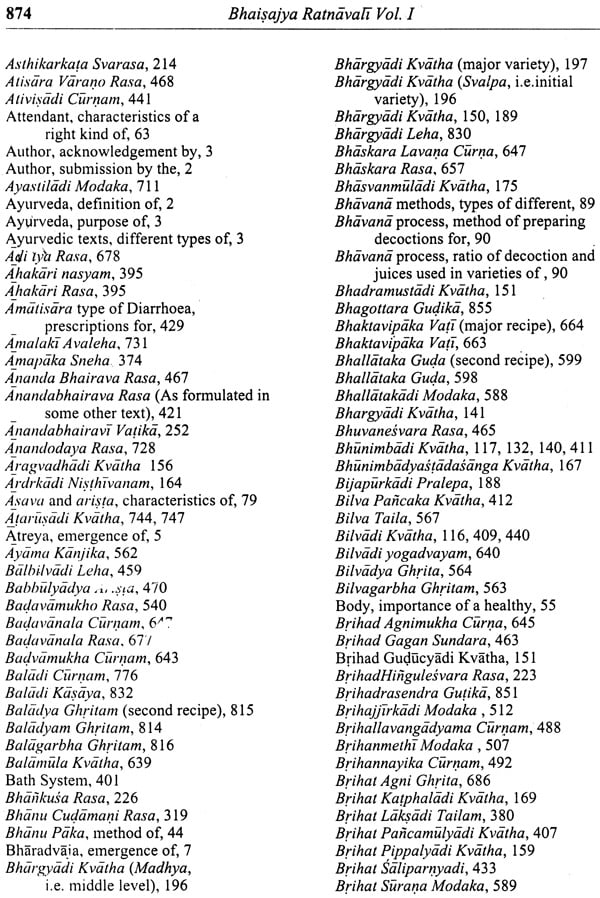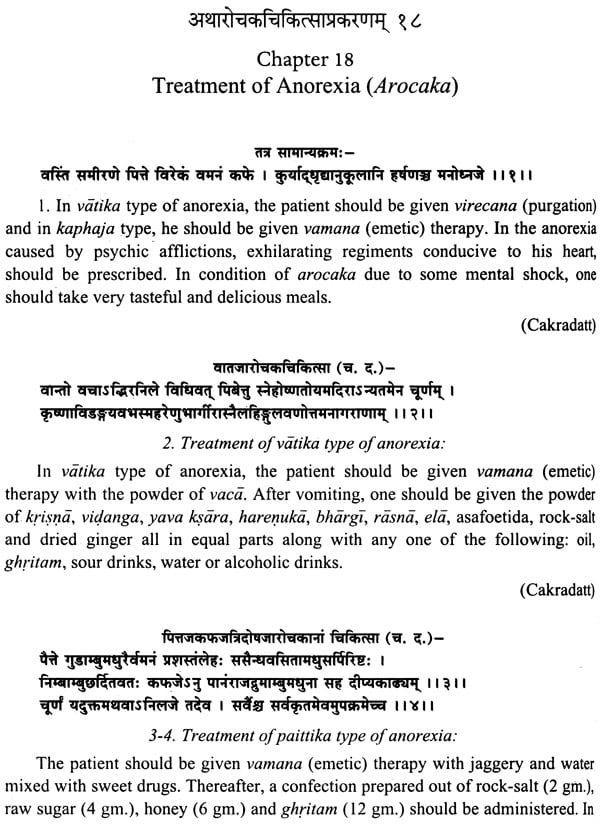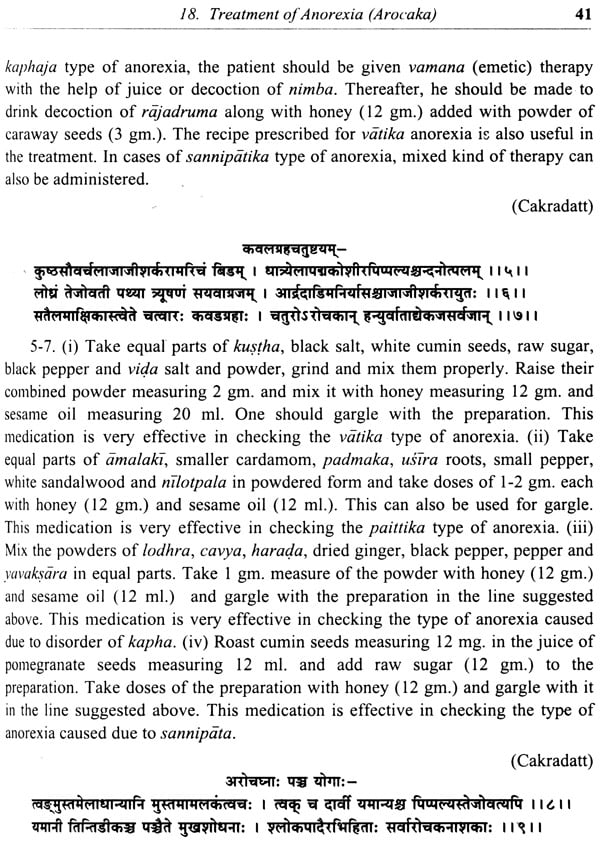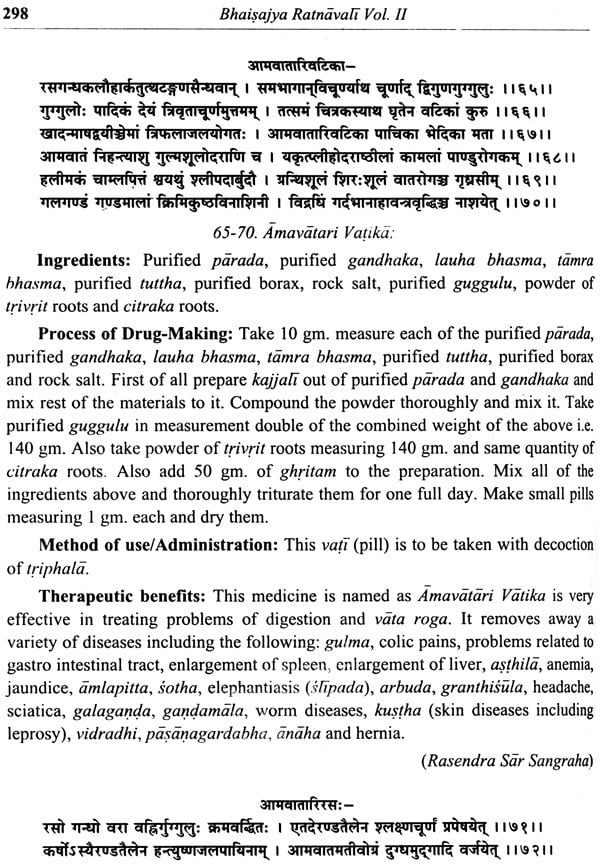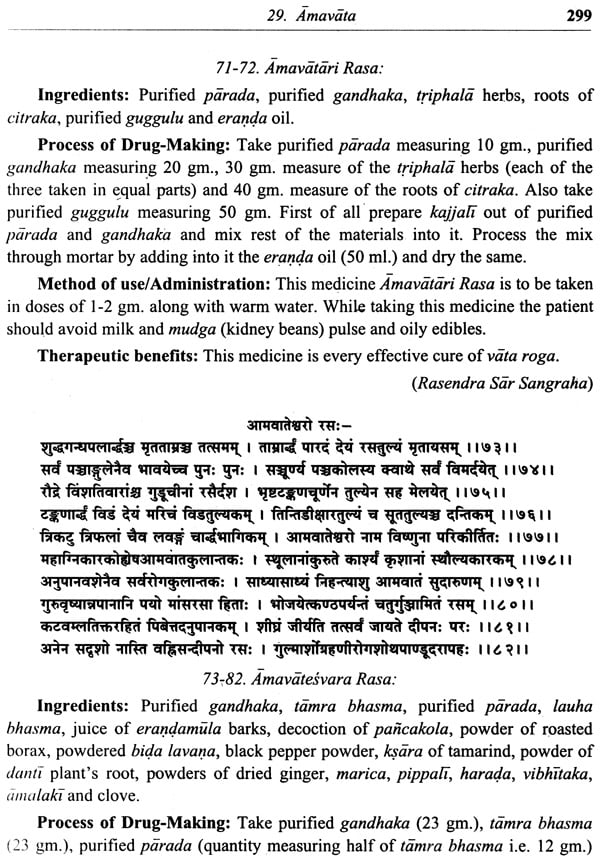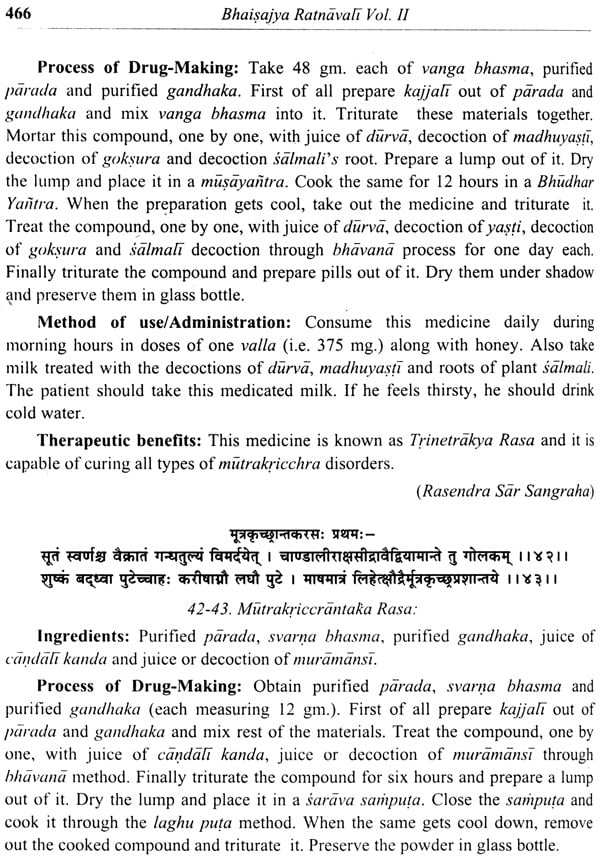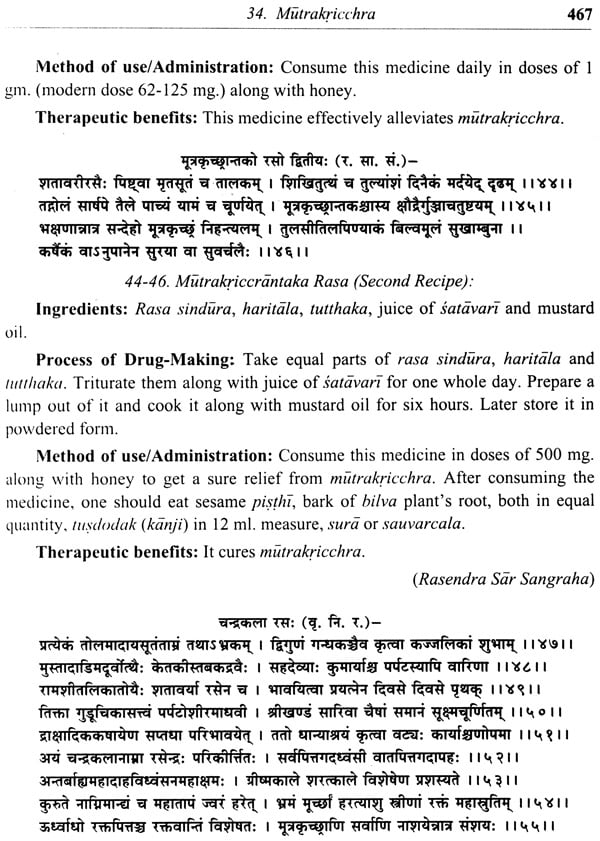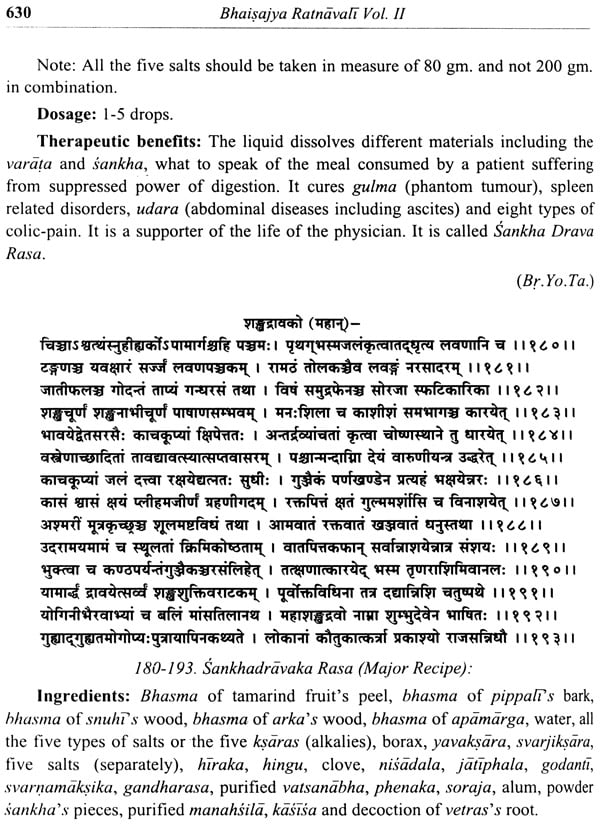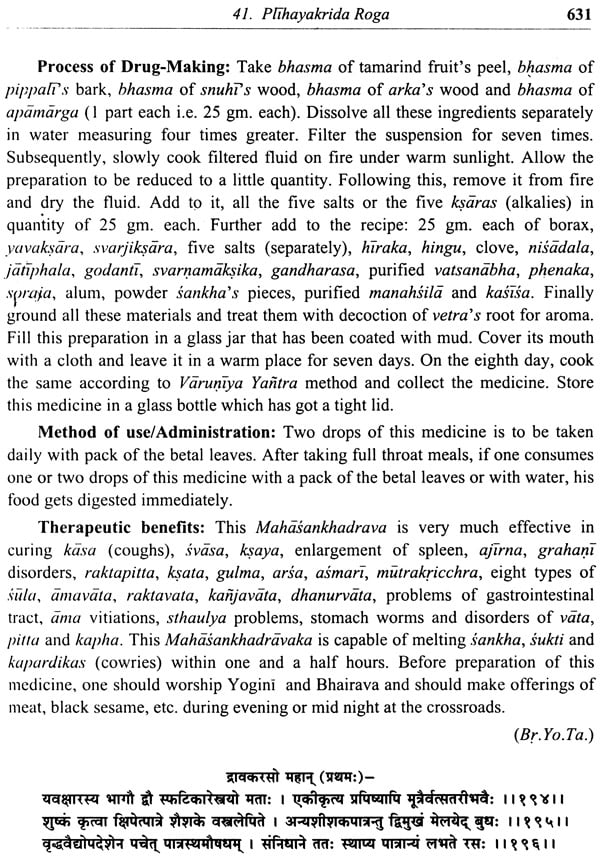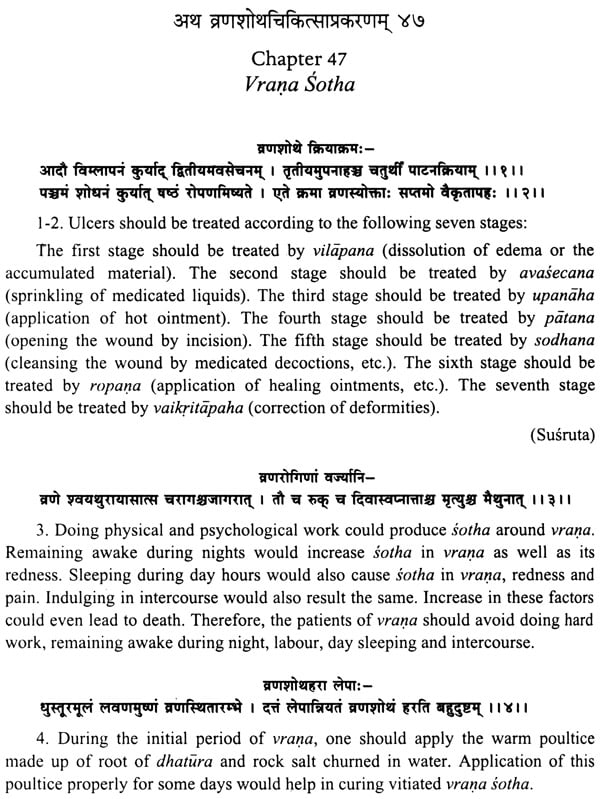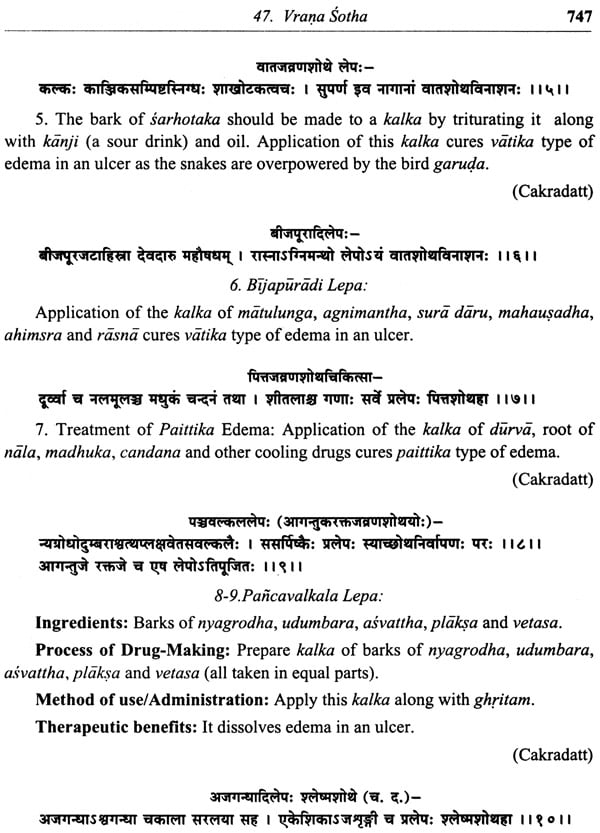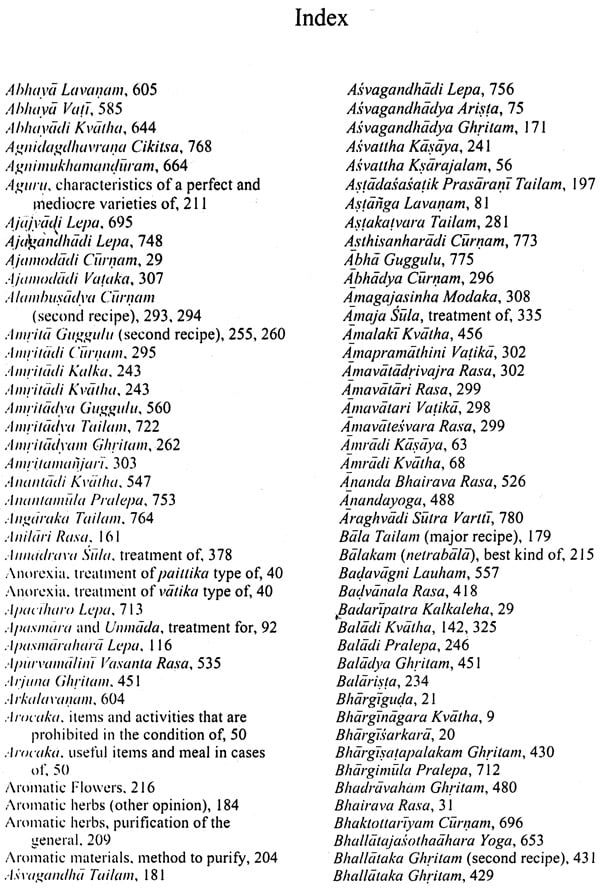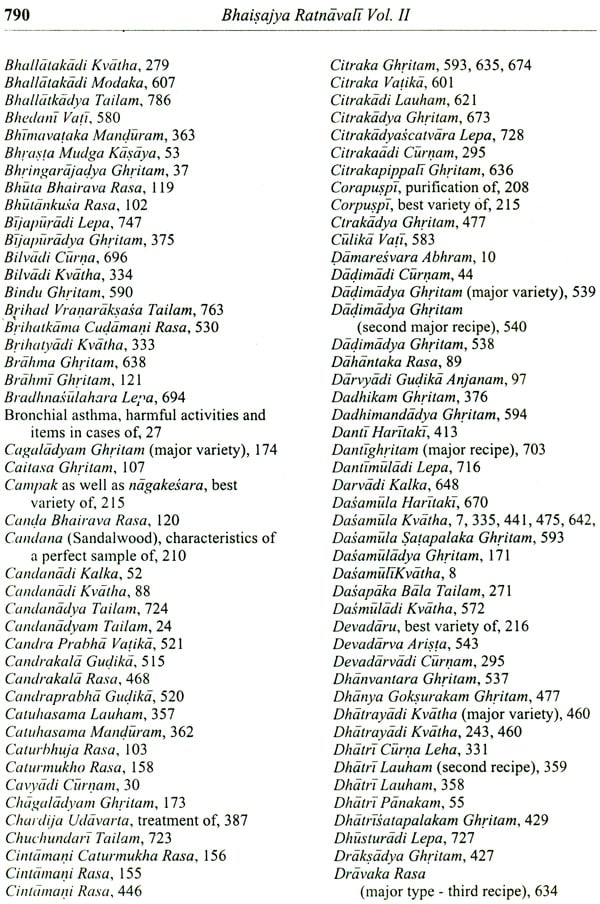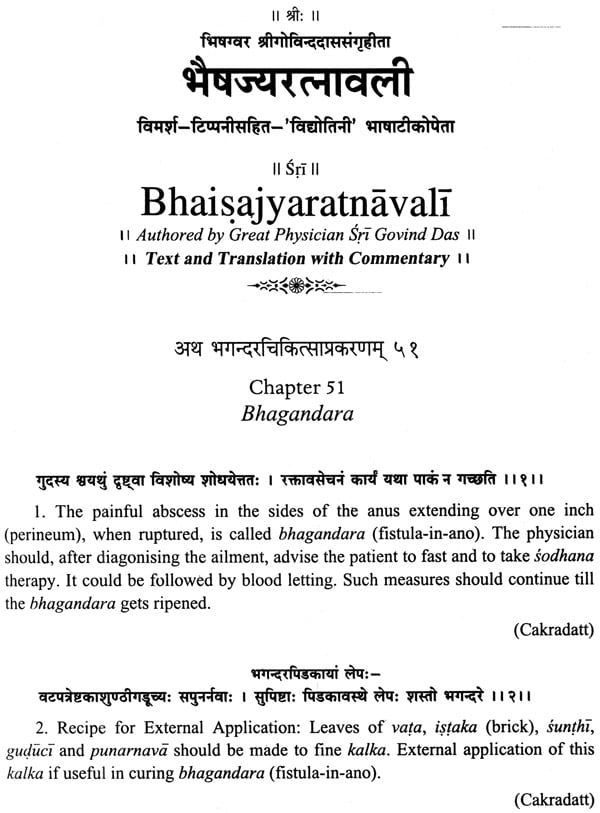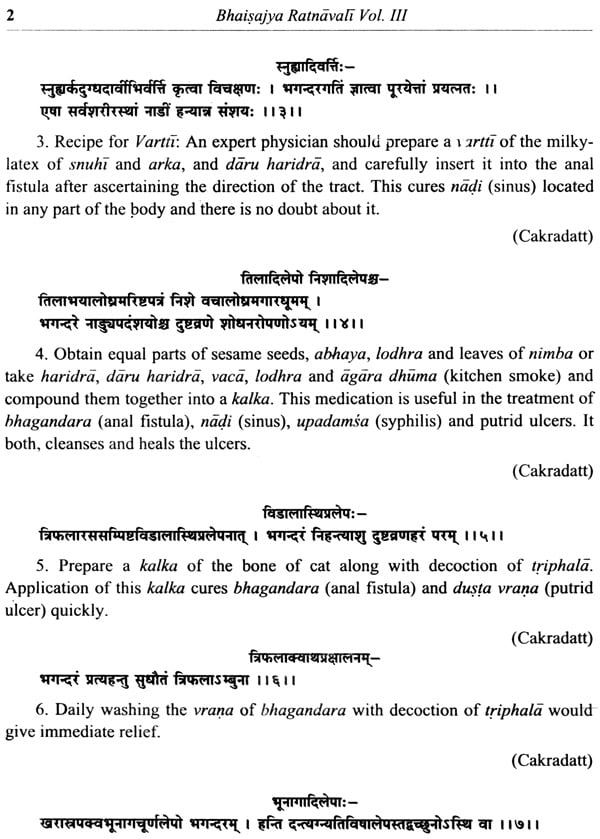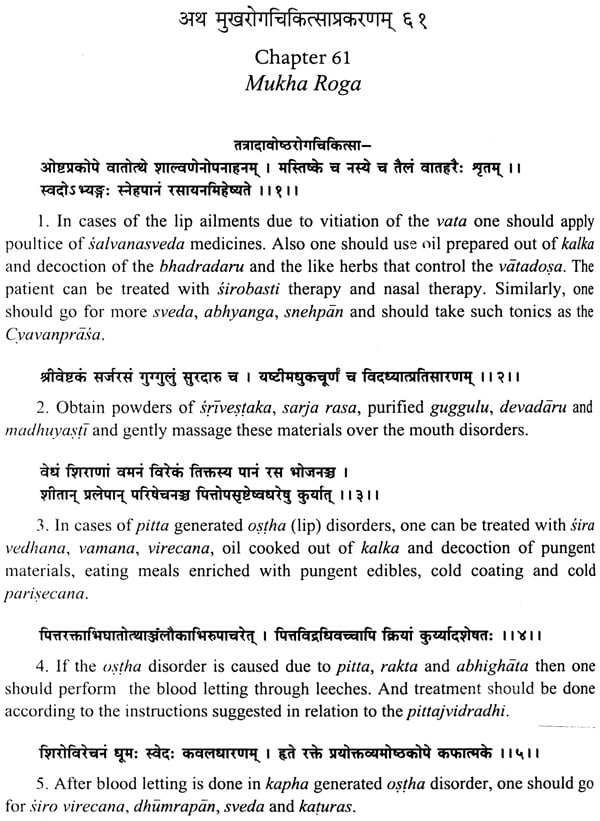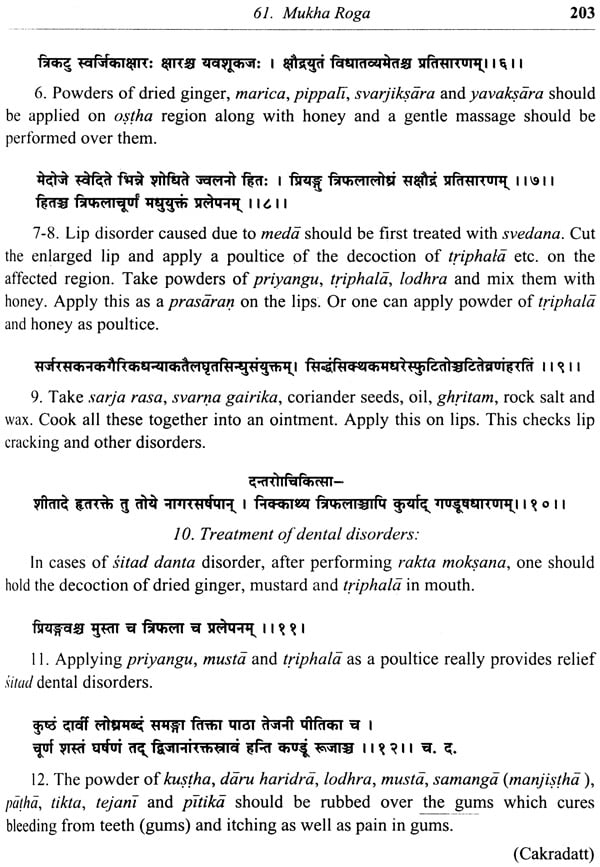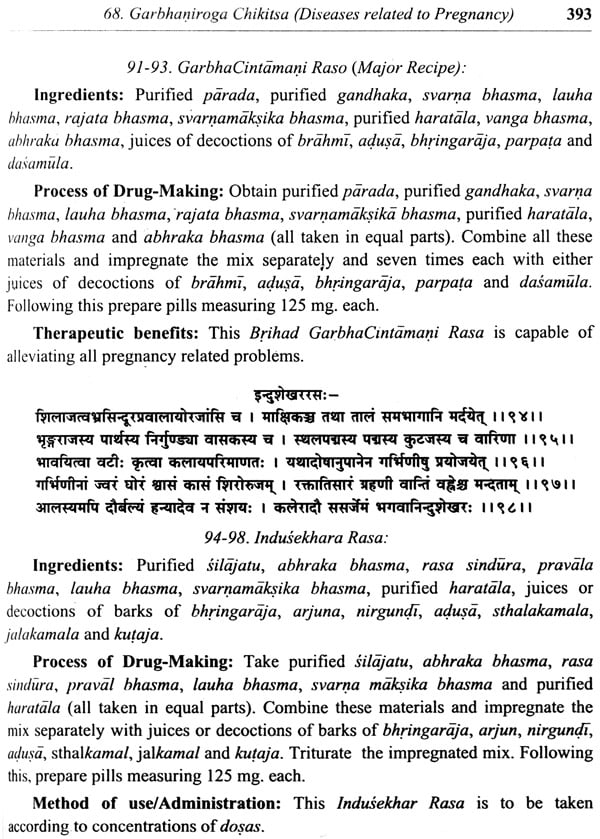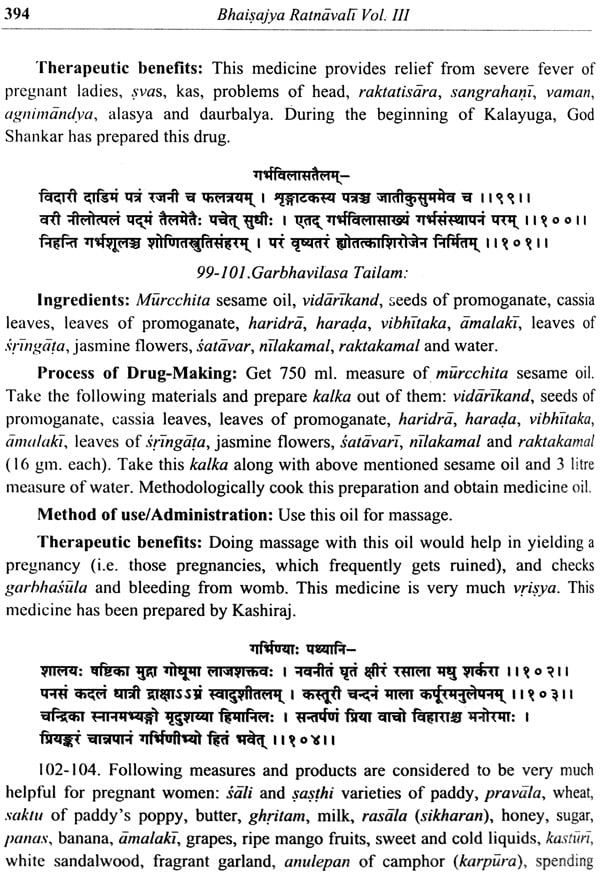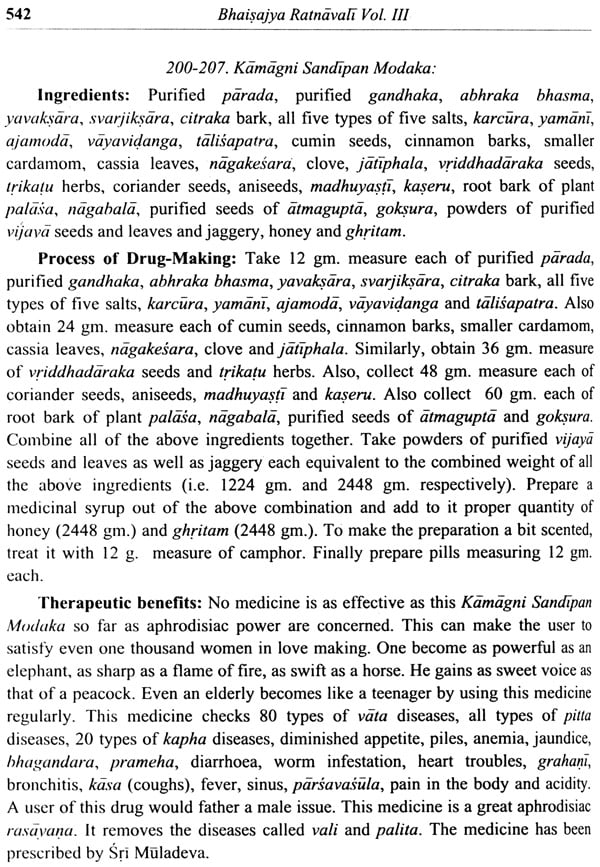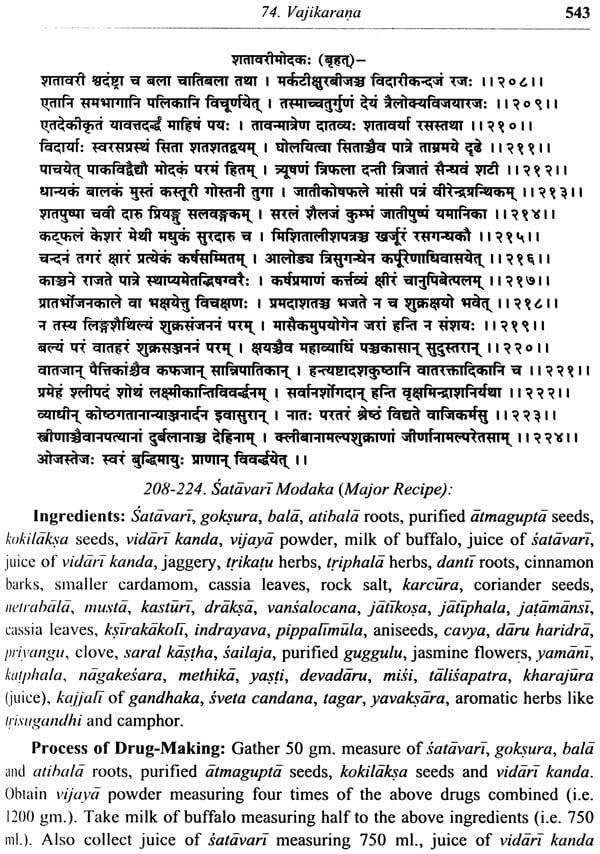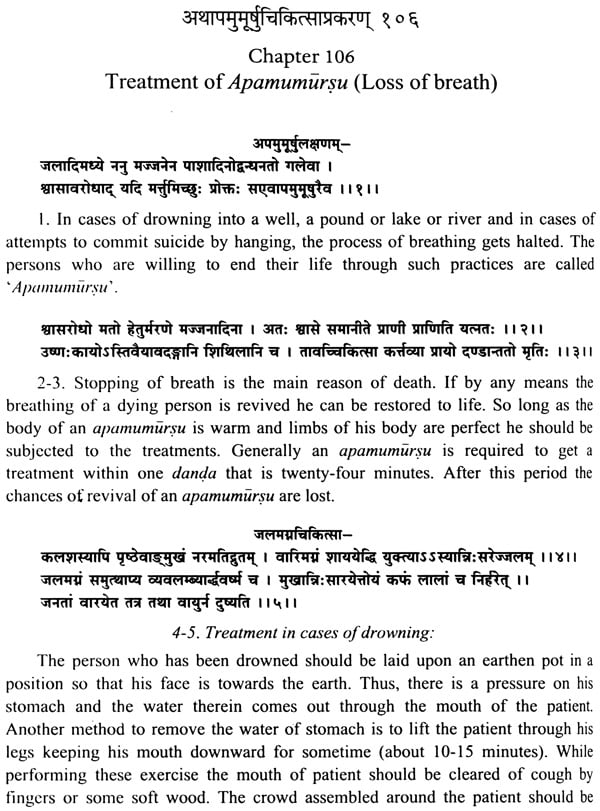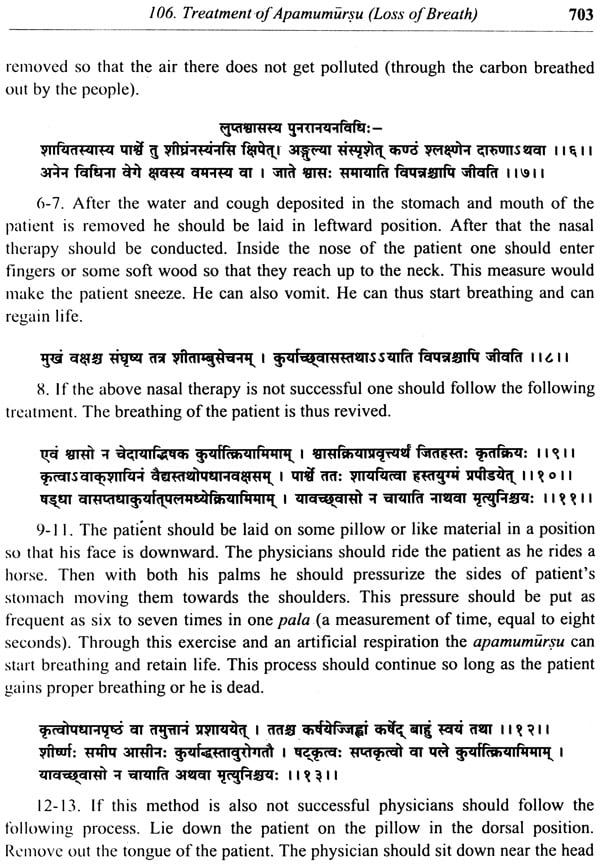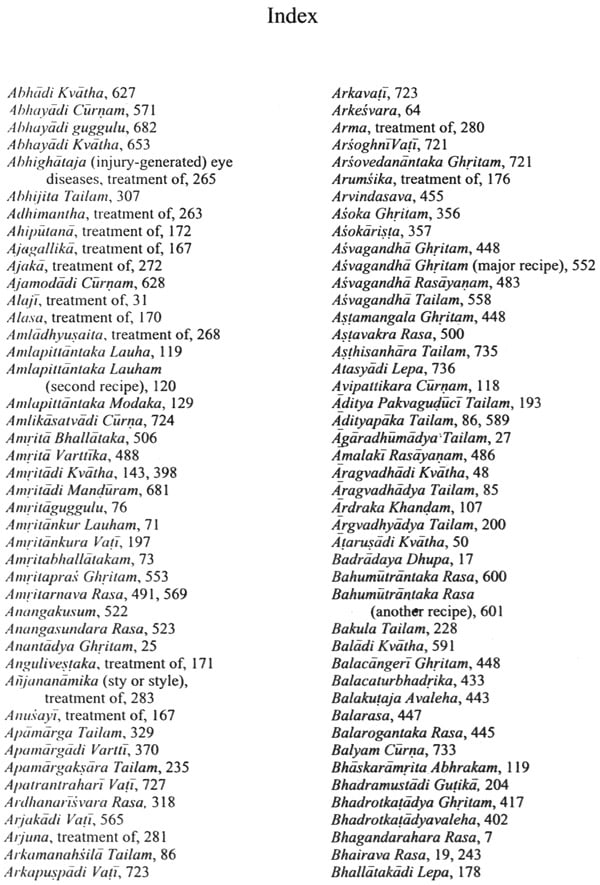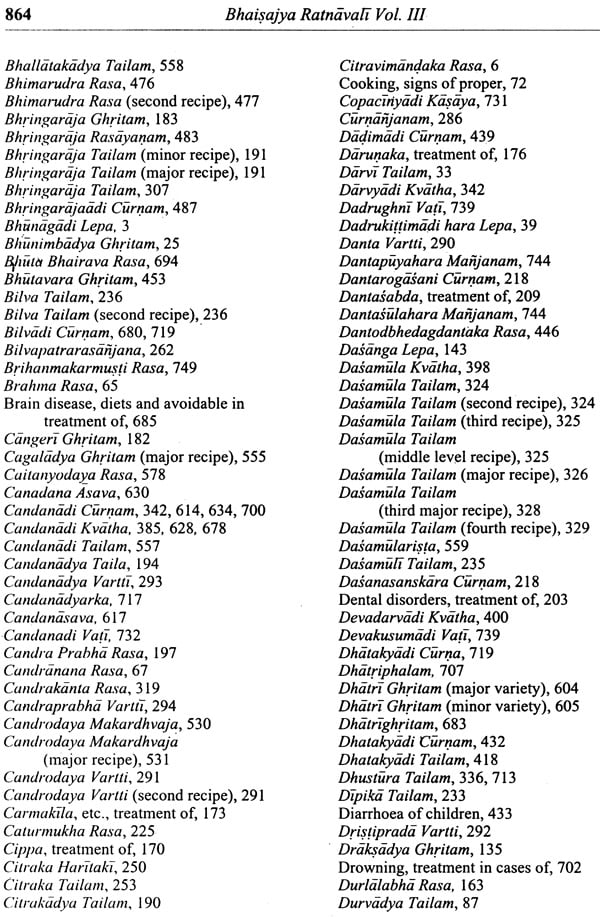
Bhaisajyaratnavali of Shri Govinda Dasji (Three Volumes)
Book Specification
| Item Code: | IDI674 |
| Author: | Dr. Kanjiv Lochan |
| Publisher: | Chaukhambha Sanskrit Sansthan |
| Language: | (Sanskrit Text with English Translation) |
| Edition: | 2006 |
| ISBN: | 8186937919 |
| Pages: | 2571 |
| Cover: | Hardcover |
| Other Details | 9.7 |
Book Description
Back of the Book
Divide into 106 chapters, each dealing with separated disease and indispositions, Bhaisajaya Ratnavali (composed in 19th century A. D. by Shri Govinda Dasji) has been the most popular collection among the practitioners as well as the manufacturers of Ayurvedic medicine across India and neighbouring countries.
The work, rightly named as Bhaisajaya Ratnavali i.e. Gem of the Medicinal Formulae has stressed including the use of mercury and sulphur (the parada and gandhaka) as well as other ingredients which were either unavailable or which remained largely unused by the authorities of Ayurveda like Charaka, Susruta and Vagbhatta. Thus, the Bhaisajya Ratnavali updates the entire gamut of Ayurvedic recipes immediately before the impact of the West on Indian medical system.
The author of Bhaisajya Ratnavali really did a great service to collate the countless medical prescriptions in use, and thus saved them for posterity. He wrote in Sanskrit considering the practical as well as sociological significance of the language. The work should have been translated into English much earlier. Nonetheless, it is a matter of pleasure that the English version of this great work is finally made available to the readers.
Considering its wide popularity and immense utility, physician Shri Brahma Shankar Mishra revised the work. Similarly, Shri Ambikadatta Shastri published a commentary of this work in the year 1956. This commentary served the readers greatly as it detailed the parts and amounts of the herbs involved in various formulae recorded. The present work is translated version of the revised work. The commentator also suggested, at places, the doses of various recipes to be taken by the patient. It may be noted that Shri Govinda Das Ji considered the young physicians and practitioners as its potential readers. The commentary of Shri Brahmashankar Mishra helped even a non-professional to take benefit from the great work. This translation has been prepared with a view to extend the reach of Bhaisajya Ratnavali to the professionals as well as the lay readers, the practitioners as well as the patients.
The present translator and the reviewer have stressed to include the original native terms frequently. Thus, the point of view of original writer have been retained free from the bias of the translator. To clarify their meanings, a glossary of Ayurvedic terms and references has been appended at the end of the Volume III of the work. If a few terms have escaped this list the kind readers could refer to our Dictionary of Ayurveda.
Dr. Kanjiv Lochan has over 15 year of experience of research in Ayurvedic literature. His earlier works included Medicines of Early India. He has obtained a Ph. D. from Jawaharlal Nehru University on History of Ayurveda related Sciences.
Preface and Acknowledgement
Translating Bhaisajya Ratnavali is a matter of satisfaction on certain important counts. First, it brings to the access of wider English-knowing people the biggest work on Ayurveda formulary for the first time. Second, since the oldness of the work is proved this translation would authenticate India's demand to nullify the claims for the patents of non-original pharmaceutical 'inventions' involving our herbal heritage. [The World International Patent Office of USA and the European Union Patent Office at Munich often claimed lack of the translated version of such works of formulary with well-established date of its original circulation in the public domain. Even though the texts such as the Charaka Samhita are old by centuries, we do not have an authenticated date of their original publication. Moreover, they are not presented in shape of a formulary. On the other hand, the work in context has been composed as a formulary and the British librarians who were in helms those days recorded it in the accession list of the National Library, Calcutta way back of 1920s. Thus the publication easily qualifies to check the efforts of non-original pharmaceutical inventions' patent. And, it covers more than 1000 herbal and herbo-mineral products of the country.]
On personal level, the work as well as me, the translator of the formulary, is heavily indebted to Dr. Anand Choudhary of Jamnagar. He has gone through the manuscript word by word and has suggested significant changes. He humbly states that his contribution to the production is as less as the salt in a pulse-soup. But, one can imagine the taste of a soup having no salt. Even though all the shortcomings of the output are my sole responsibility, the work might have been still poorer without the support so kindly rendered by Dr. Choudhary. I express my gratitude to him, to his wife and to his son Anusatya (As Dr. Saab took up the job at a very short notice, his family faced the lack of his involvements in puja celebrations of the year). Kind involvement of Dr. Prabhakar Rao of Delhi is also remembered, with gratitude.
As a matter of fact, the translation work extended for more than two full years. In course of this duration, as chance would have it, I witnessed a great upheaval in life. This has definitely impacted the work. So I must take this opportunity to acknowledge with sincerity all those who stood by me when I needed mental and material support, and badly so. In this sense, the first name occurs, very deservingly, of Ruchika Ratna. It was this young lady, who emptied her purse (containing her first salary) to see that I had a proper treatment and rehab when, due to mental tension (as carrying the heavy load of the manuscript of the present work, I wandered through various Ayurveda universities and college, and failed to find a zealous reviewer for the same), I neared a stage of brain hemorrhage. Her brother Rachit Raj, who rushed from Pune to attend on me at the Sujivan Hospital of Ahmedabad is also remembered. The siblings regard me as their guardian and as such, technically, I cannot thank them. Nevertheless, I bless them and wish that the world know that even in this era, there are young children who care and serve individuals beyond the ambit of blood relationship, out of mutual understanding.
The encouraging phone calls received by me at the hospital from my brothers messers Rajiva, Sajiv, Chiranjiv and Amarijiva Lochan, Kamara and by my sisters Anjali (and her husband Shri Manoj Kr. Lal) and Palu, by Mika (who called from Japan), wife of my younger brother helped me to recruit my health so that I could finish the work. The wonderful treatment I received on part of Dr. Ashvin Dhabi of Sujivan Hospital is also remembered. Dr. Dabhi is, to me and as I could witness not money-minded, and he got me admitted to his hospital, knowing it well that I did not have enough money to pay the required fee. May god bless him with a long and active life.
I remember with gratitude the help of our family friend Shri Vijay Ambastha and his wife Nishaji (alias Beenaji) of Giridih, Jharkhand.
I also acknowledge the great support of Sukka Shekar rao of Srikakulam (Khajuru- Kaviti), Andhra Pradesh. It is he who has composed the most of the manuscript. Shekar's speed and enterprise with the computer, his power to grasp the subject with its technical terminology are simply amazing. Support of Govind, Sanjay, Narayan of Delhi and Amar Shukla of Ahmedabad is also acknowledged. Support of Archna Mathur, Jagu Ranjan Andia, Dharmendra and Prabhat Mishra is also remembered.
Without the help of these individuals the work in your hand could not have got the present shape and would have been further delayed.
We have worked on a number of proof copies of the text. Still, there might have remained typographical and other errors in the work. The kind readers are requested to send suggestions and highlight the shortcomings of the translation so that it could be taken care of in next editions.
| Preface and Acknowledgment by Translator | ||
| Preface by the Reviewer | ||
| List of Transliteration | ||
| List of the Weight and Measurements | ||
| Chapter 1. | Birth of the Ayurveda | 1 |
| Chapter 2. | Refinement and Incineration of Various Materials | 14 |
| Chapter 3. | Miscellaneous Topics | 55 |
| Chapter 4. | Definition of Various Terms | 68 |
| Chapter 5. | Different Kinds of Fever | 94 |
| Chapter 6. | Treatments of Jvaratisara (Fever associated with Diarrhoea) | 402 |
| Chapter 7. | Atisara (Diarrhoea) | 427 |
| Chapter 8. | Grahani (Sprue or Psilosis) | 474 |
| Chapter 9. | Arsa (Piles) | 576 |
| Chapter 10. | Mandagni (Dyspepsia) | 631 |
| Chapter 11. | Worm Infestation | 690 |
| Chapter 12. | Pandu Roga (Anemia) | 709 |
| Chapter 13. | Treatment of Hemorrhagic Diseases (Rakta Pitta) | 739 |
| Chapter 14. | Treatments For Pthysis or Tuberculosis (Rajyaksma) | 771 |
| Chapter 15. | Kasa (Coughs and bronchitis) | 830 |
| Index | 873 | |
| Please Note: Glossary of technical words has been appended under Volume III. | ||
| List of Transliteration | ||
| List of the Weight and Measurements | ||
| Chapter 16. | Hiccough and Dysponea | 1 |
| Chapter 17. | Svara Bheda | 28 |
| Chapter 18. | Treatment of Anorexia (Arocaka) | 40 |
| Chapter 19. | Chhardi | 51 |
| Chapter 20. | Trisna (Morbid Thirst) | 61 |
| Chapter 21. | Murccha (Syncope) | 71 |
| Chapter 22. | Madatyaya | 78 |
| Chapter 23. | Treatment of Daha (Burning Syndrome Or High Temperature) | 86 |
| Chapter 24. | Unmada | 92 |
| Chapter 25. | Apasmara | 114 |
| Chapter 26. | Vata vyadhi | 127 |
| Chapter 27. | Vata Rakta | 237 |
| Chapter 28. | Urustambha | 275 |
| Chapter 29. | Amavata | 284 |
| Chapter 30. | Sula (Colic Pain) | 324 |
| Chapter 31. | Udavarta Anaha | 381 |
| Chapter 32. | Treatment of Gulma (Localized Abdominal Tumour or Swelling) | 397 |
| Chapter 33. | Treatment of Hridrog | 434 |
| Chapter 34. | Mutrakricchra | 454 |
| Chapter 35. | Mutra Ghata (Blocked Discharge of Urine) | 473 |
| Chapter 36. | Asmari | 483 |
| Chapter 37. | Prameha Roga | 499 |
| Chapter 38. | Prameha Pidaka (Carbuncle) | 546 |
| Chapter 39. | Medo Roga | 551 |
| Chapter 40. | Udara Roga | 565 |
| Chapter 41. | Plihayakrida Roga | 597 |
| Chapter 42. | Sostha Roga | 641 |
| Chapter 43. | Vriddhi Roga (Morbid enlargement of vital parts or dosas of the body) | 684 |
| Chapter 44. | Galaganda (Lymphadenitis) | 707 |
| Chapter 45. | Slipada (Filariasis) | 727 |
| Chapter 46. | Vidradhi | 739 |
| Chapter 47. | Vrana Sotha | 746 |
| Chapter 48. | Sadyo Vrana | 767 |
| Chapter 49. | Bhagna Roga | 772 |
| Chapter 50. | Nadi Vrana (Sinus Fistula) | 789 |
| Index | ||
| List of Transliteration | ||
| List of the Weight and Measurements | ||
| Chapter 51. | Bhagandara | 1 |
| Chapter 52. | Treatment of Upadamsa (Chancre) | 13 |
| Chapter 53. | Suka Dosa | 30 |
| Chapter 54. | Kustha | 35 |
| Chapter 55. | Udarda Sita Pitta | 103 |
| Chapter 56. | Amla Pitta | 112 |
| Chapter 57. | Visarpa | 139 |
| Chapter 58. | Visphota | 148 |
| Chapter 59. | Masurika | 154 |
| Chapter 60. | Ksudra Roga (Minor Ailments) | 167 |
| Chapter 61. | Mukha Roga | 202 |
| Chapter 62. | Karna Roga | 231 |
| Chapter 63. | Nasa Roga | 246 |
| Chapter 64. | Netra Roga | 255 |
| Chapter 65. | Siro Roga | 310 |
| Chapter 66. | Treatment of Leucorrhoea | 339 |
| Chapter 67. | Yoniviyapa Chikitsa (A Disease of Females) | 360 |
| Chapter 68. | Garbhinirogachikitsa (Diseases related to Pregnancy) | 379 |
| Chapter 69. | Treatment of Sutika Roga (Puerperal Indispositions) | 397 |
| Chapter 70. | Stana Roga (Lacteal Disorders) | 421 |
| Chapter 71. | Treatment of Balaroga (Diseases of Children and the Infants) | 425 |
| Chapter 72. | Treatment of Visa (poison) | 468 |
| Chapter 73. | Rasayana | 482 |
| Chapter 74. | Vajikaran | 509 |
| Chapter 75. | Viryastambha (Detaining the discharge of semen) | 563 |
| Chapter 76. | The Diseases of Stomach | 568 |
| Chapter 77. | Smaronmada (Insanity caused due to Memory and Desires) | 571 |
| Chapter 78. | Gadodvega (Anguish caused by Ailments) | 573 |
| Chapter 79. | Treatments for Insanity | 577 |
| Chapter 80. | Treatment of the Acala Vata Roga | 579 |
| Chapter 81. | Treatment of the Tandava Roga | 581 |
| Chapter 82. | Snayu Roga | 583 |
| Chapter 83. | Skhalitya Cikitsa (Treatment of Alopecia) | 589 |
| Chapter 84. | Treatment of Khanjanika (Lameness) | 591 |
| Chapter 85. | Treatment of Urustoya (Pleurisy) | 593 |
| Chapter 86. | Treatment of Bahumutra (Polyuria) | 595 |
| Chapter 87. | Soma Roga Mutra Atisara | 607 |
| Chapter 88. | Spermatorrhea | 611 |
| Chapter 89. | Treatment of Aupasargika Meha (Gonorrhea) | 619 |
| Chapter 90. | Treatment of Ojomeha (Albuminuria) | 625 |
| Chapter 91. | Treatment of the Disease Lasikameha (Discharge of Lymph or Chyle through Urine) | 632 |
| Chapter 92. | Treatment of the Dhvajabhanga (A King of Impotency) | 639 |
| Chapter 93. | Treatment of the Vrikka Roga (Diseases of Kidney) | 647 |
| Chapter 94. | Treatment of the Kloma Roga | 652 |
| Chapter 95. | Treatment of Syphilis (Phiranga Roga) | 657 |
| Chapter 96. | Snayuka Yoga | 662 |
| Chapter 97. | Treatment of Cases of Mercury Poisoning | 664 |
| Chapter 98. | Treatment of Sirsambu Roga (A kind of Hydrocephalus) | 669 |
| Chapter 99. | Treatment of Mastiska Vepana (Head Injury) | 674 |
| Chapter 100. | Brain Enlargements | 677 |
| Chapter 101. | Treatment of General Brain Diseases | 680 |
| Chapter 102. | Treatment of Sunstroke | 686 |
| Chapter 103. | Treatment of Yoga Apatantraka (Depression among Women) | 692 |
| Chapter 104. | Treatment of Yoni Kandu (Dryness and Itching) | 696 |
| Chapter 105. | Treatment of Andadhara Roga (A Disease among women) | 699 |
| Chapter 106. | Treatment of Apamumursu (Loss of breath) | 702 |
| Appendix | 706 | |
| Glossary | 751 | |
| Index | 863 |
